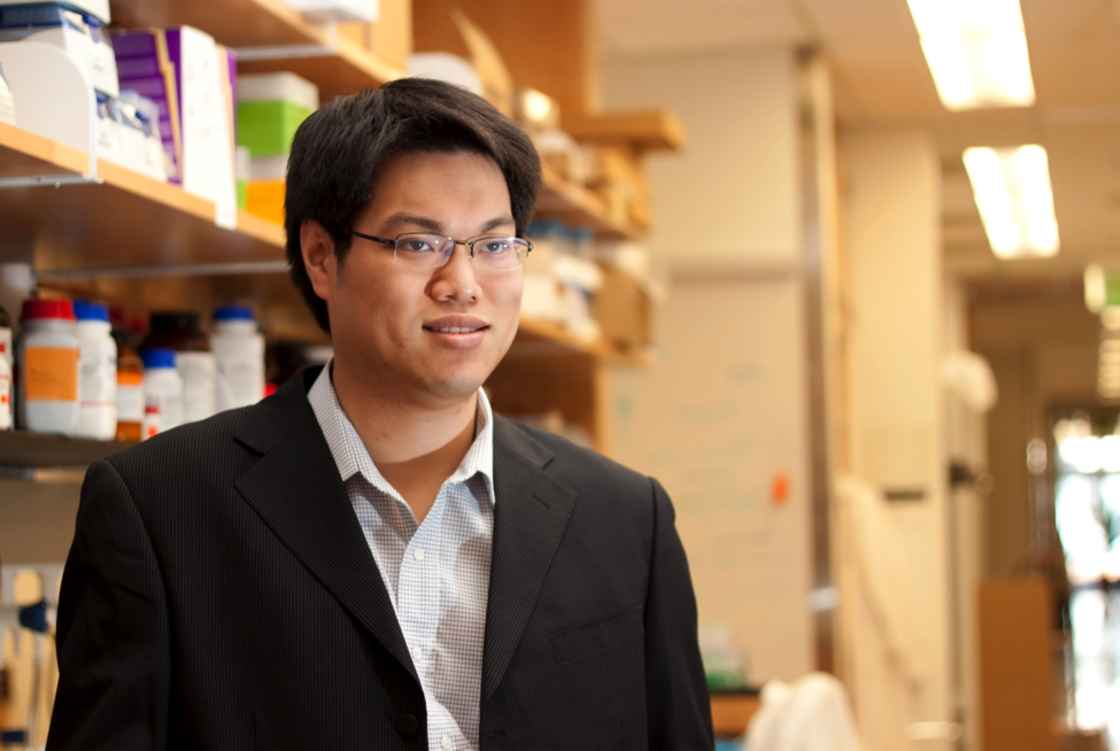A sticky situation
Mucus is an uncommon topic of discussion, both scientifically and socially, due to the less than glamorous nature of the subject. This perception did not deter Lai’s interest in exploring the connection between the immune system and mucus, in blocking infections and keeping us healthy.
Prior to starting his own lab, Lai was researching how to get substances through the mucus barrier. At that time, most developed drug delivery systems could not overcome the mucus barrier, so there was little technology available that could achieve targeted and sustained drug delivery to mucosal tissues. In order to solve this problem, Lai pioneered the development of mucus-penetrating participle (MPP) technology, which engineered particles to exhibit the same mechanism of penetrating mucus as used by the viruses that affect us. His subsequent work focused on translating that technology to make it viable in order to demonstrate its wide applicability. This provided the basis for the launch of the Massachusetts start-up, Kala Pharmaceuticals in 2009, to which Lai still serves as an advisor.
Mucus coats almost every inner surface of our bodies, from airways to the genital tract. The vast majority of illnesses, from the common cold to sexually-transmitted diseases, occur at mucosal surfaces. Lai explains, “After spending years trying to get substances through the mucus barrier, I had an appreciation for how good a barrier mucus proves to be. This made me think that if I could find out a mechanism to reinforce it, it could help prevent us from falling sick at all.”
When Lai first started his lab, he was interested in understanding how to better reinforce the defence against mucosal infections. He says, “If we were to treat our body as something valuable in need of protection against foreign invaders, we would want to keep the fighting at the walls of the castle rather than the centre of it. Therefore, it makes sense to develop a mechanism of fighting viruses at mucosal membranes before they can enter our body and infect it.”
Much of immunology focuses on the immune system and the blood, but very little is known about how it works with mucus. Our bodies already produce and secrete more antibodies into the mucus than either the blood or the lymph. Antibodies help direct our immune system to identify and ward off foreign substances. Keeping this in mind, it became evident to Lai that the body specifically produces these antibodies to work together with mucus and block infections.
Conventional thinking dictates that the interactions of antibodies in mucus are very weak, thus do not have the potential of immobilising pathogens in the mucus. However, Lai sought to tackle the matter using a different approach. He studied the antibody function on pathogens in mucus with the understanding that there could be multiple antibodies bound to the same pathogens, thus creating more interactions with the mucus. Using the analogy of a Velcro patch, if we were to consider that each hook of the patch is weak, but when many of these hooks attach together on the same surface, a very strong binding can be formed. Lai was the first to bring this mechanism of immune protection to the immunology and infectious disease community in a paper published a year ago in the Nature journal Mucosal Immunology that demonstrated for the first time that antibodies could indeed immobilise virus in mucus using a herpes virus transmission model to show that trapping herpes virus in mucus can block the vaginal transmission of herpes.
Lai’s lab is currently studying how these interactions take place and how far this concept can be extended, with evidence to suggest that this mechanism is a universally protective one and can work across multiple mucosal surfaces.

Lai is currently an Assistant Professor at the University of North Carolina at Chapel Hill. He received a BS in Chemical and Biomolecular Engineering from Cornell University (2003) after which he pursued a PhD in Chemical and Biomedical Engineering at Johns Hopkins University (2007). Lai was the recipient of the Croucher Fellowship in 2008. He has authored over 30 publications till date as well as numerous patents.
To view Dr Sam Lai’s personal Croucher profile, please click here.